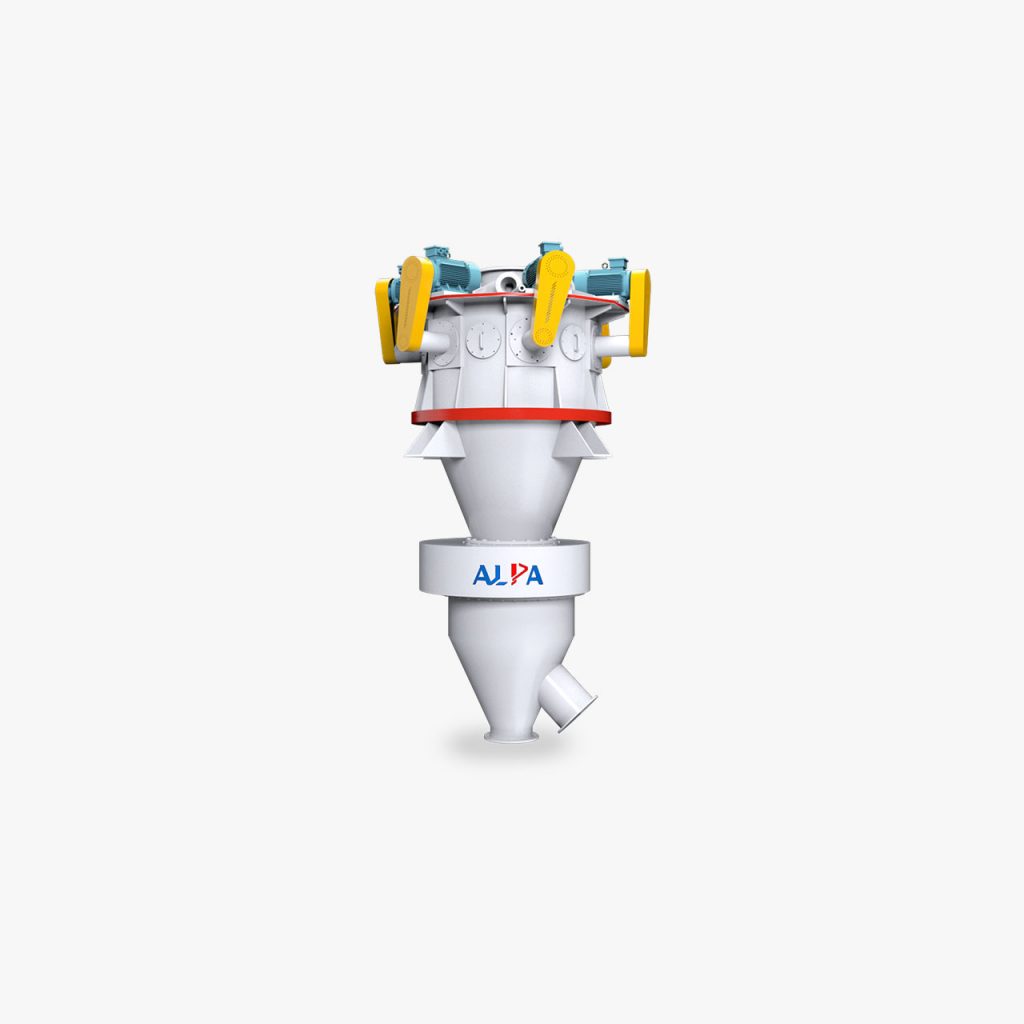Superfine Powder Classification Process

Ultrafine powder raw materials are not only the basis for preparing structural materials, With the application of ultra-fine powder in modern industry more and more widely, the position of ultra-fine powder classification technology in powder processing becomes more and more important.
At present, it is difficult for the ultrafine powder produced by mechanical methods to achieve the required particle size through mechanical crushing at one time, and the product is often in a large particle size distribution range. In the use of various modern industrial fields, it is often required that ultrafine powder products be in a certain particle size distribution range.
At present, the more common grading method is based on the gravitational field and the centrifugal force field.
Gravity field grading principle is the oldest, most classic and relatively perfect theory, and its theoretical basis is based on Stokes’ law in laminar flow state. In the classification process, it is assumed that the flow field is carried out in a laminar flow state, and the ultrafine solid particles are assumed to be spherical and free to settle in the medium. These are quite different from the actual situation. In the centrifugal force field, the particles can obtain much greater centrifugal acceleration than the gravity acceleration, so the sedimentation velocity of the same particle in the centrifugal field is much higher than that in the gravity field, in other words, even smaller particles can obtain a larger sedimentation velocity .
In addition, ultrafine powder classification can be divided into dry classification and wet classification according to the medium used. The characteristic of dry classification is that air is used as fluid, which is cheap and convenient, but it has two disadvantages. One is that it is easy to cause air pollution, and the other is that the classification accuracy is not high. Wet classification uses liquid as the classification medium, and there are many post-processing problems, that is, the classified powder needs to be dehydrated, dried, and dispersed for wastewater treatment, etc., but it has the characteristics of high classification accuracy and no explosive dust.
According to different fluid media, it can be divided into dry classification and wet classification. In dry classification, it can be divided into gravity type, centrifugal type and inertial type according to different classification principles.
1. Gravity super fine classifier
Gravity ultra-fine classifier is used to classify particles with different particle sizes in the gravitational field at different sedimentation velocities. There are two types of gravity classifiers: horizontal flow type and vertical flow type.
2. Inertia classifier
Particles have a certain amount of kinetic energy when moving, and when the moving speed is the same, the larger the mass, the larger the kinetic energy, that is, the larger the inertia of motion. When they are subjected to the action of changing their motion direction, different motion trajectories will be formed due to the difference in inertia, so as to realize the classification of large and small particles. At present, the classification particle size of this classifier can reach 1 μm. If the particle agglomeration and the existence of eddy current in the classification chamber can be effectively avoided, the classification particle size is expected to reach submicron level, and the classification accuracy and classification efficiency will be significantly improved.
3. Centrifugal classifier
Centrifugal classifiers are a type of ultra-fine classifiers that have been developed so far because they are easy to generate a centrifugal force field that is much stronger than the gravitational field. According to the different flow patterns in the centrifugal force field, it can be divided into two types: free vortex type and forced vortex type.
4. Jet classifier
Compared with other classifiers, the jet classifier has the following characteristics:
(1) There are no moving parts in the grading part, the maintenance workload is small, and the work is reliable.
(2) Jet jet can make the powder get good pre-dispersion.
(3) Once the particles are dispersed, they immediately enter the classifier for rapid classification, avoiding the secondary agglomeration of the particles to the greatest extent.
(4) Multi-level products can be obtained, and the particle size of each level can be flexibly adjusted through the angle of the grading blade and the outlet pressure.
(5) High classification efficiency and classification granularity.
